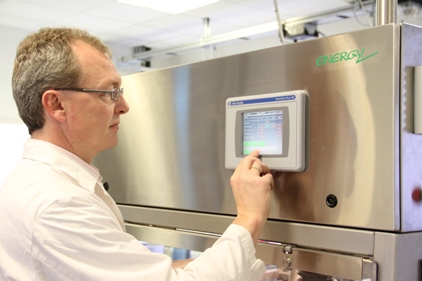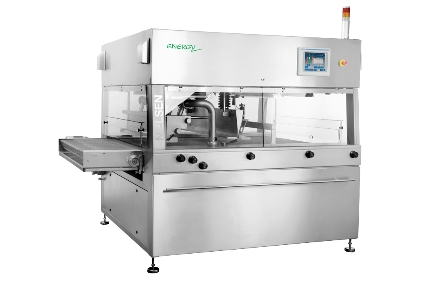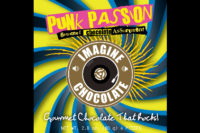
|
| Dennis Holmud |
Dennis Holmud has a special skill few confectionery engineers can claim — he can visualize chocolate as it goes through various processes.
Add to that a love for watching machines work perfectly, and the senior specialist for tempering and chocolate processes at Farum, Denmark-based Aasted, would seem to have the perfect attributes to spark innovation.
And while he admits to practically living in the lab, breakthroughs don’t necessarily descend onto the workplace. In Holmud’s case, he was taking a bath. While soaking, he began to contemplate one of the challenges to improving the Nielsen line of enrobing machines.
Interestingly, until the merger Holmud didn’t give much thought to enrobers. (In January 2010, Aasted, known for its tempering and moulding lines, merged with nearby neighbor, A.E. Nielsen, manufacturer of enrobers and cooling tunnels). That all changed with Allan Aasted, ceo and Mads Hedstrom, formerly ceo of A.E. Nielsen and now President of Sales, asked him to look at the Nielsen line.
“I was thinking of this final tempering process occurring in the enrober, where you reheat the chocolate in a service tank to complete crystalization,” he says. “As we know, chocolate contains a lot of fat [cocoa butter], which is a good insulator. So, we’re trying to control the temperature to achieve final crystallization. At the same time, we’re feeding chocolate back into the tank from the chocolate curtain. There’s no way to truly control the chocolate. It wasn’t a perfect process.”
And for Holmud, it’s all about perfection and seeing machines run beautifully. At first, he thought of finding a way to place the chocolate somewhere else.
“I couldn’t find a right place,” Holmud admits. It then dawned on him — while still soaking — that one could simply pump fully tempered chocolate into the enrober – direct injection — in the chocolate flow running up to the flow pan without the need of a final tempering process in the service tank.
“You wouldn’t have to reheat the chocolate in the service tank,” he explains. Moreover, since the final tempering stage was eliminated, and thereby obtained a perfect process, one could use less chocolate for the process, consumption plus about 10%, Holmud says.
“Typically, if you’re applying about 2,000 kilos of chocolate an hour to the enrober, you are actually applying 1000 kilos of chocolate onto a product. You’re then re-circulating 1,000 kilos back to the tempering machine in order to try to obtain a perfect tempering of chocolate,” he explains.
By this process with the fully tempering chocolate prior to application and the direct injection to the chocolate flow, there’s no need to have a tempering unit that is tempering the total 2.000 kilos for the enrober.
As Holmud emphasizes, the idea was really simple – so simple that upper management didn’t believe him. After all, the existing concept had been in place for decades.
It took all about a day to make the necessary adjustments in the lab, he says. Within a month of preliminary testing and monitoring, Holmud was ready for a full, official test.
Everything worked as predicted.

|
“It’s perfect. We’re able to keep a stable temperature after tempering. And there’s no need to heat the chocolate in the service tank either than retaining the stable temperature,” he adds.
Moreover, the volume capacity for a tempering unit to match enrobing capacity could be nearly halved. For example, in his production lab at Aasted, he could replace his 500-kilo tempering unit with a 200-kilo capacity to handle the 620mm wide enrober.
“When you are talking about large production units, that a major reduction in energy savings,” he adds. Combined with Aasted’s SuperNova Energy tempering machine, the energy savings can easily be total 50% or more.
Clearly, Holmud’s soaking will now prevent chocolate companies from being soaked by energy costs.






